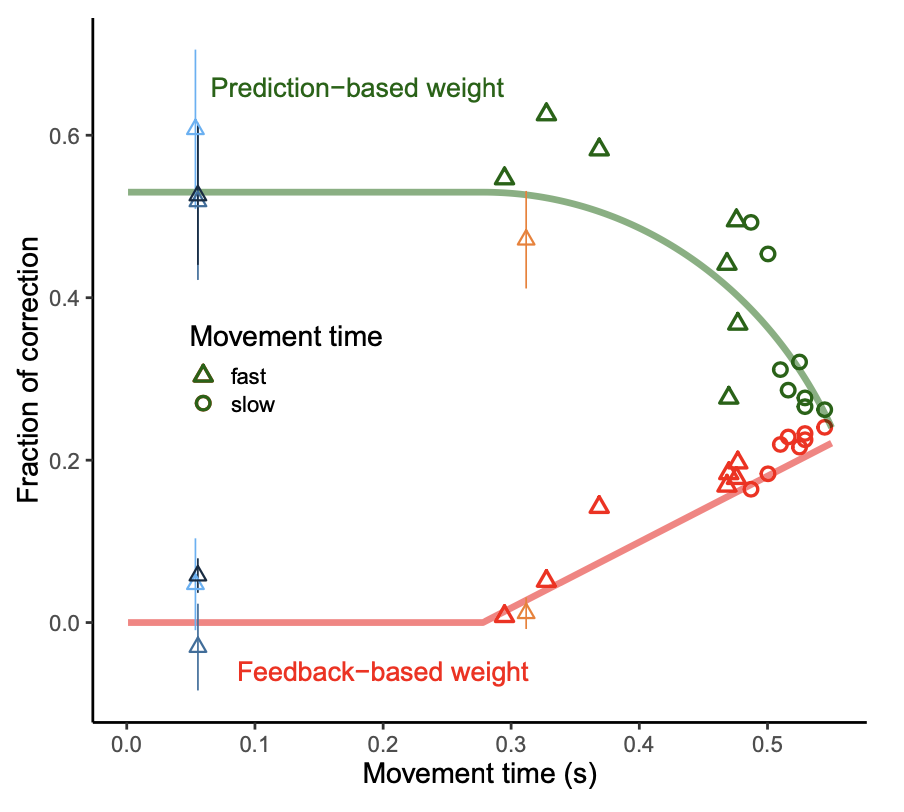Abstract
Many daily life situations (e.g. dodging an approaching object or hitting a moving target) require people to correct planning of future movements based on previous temporal errors. However, the actual temporal error can be difficult to perceive: imagine a baseball batter that swings and misses a fastball. Here we show that in such situations people can use an internal error signal to make corrections in the next trial. This signal is based on the discrepancy between the actual and the planned action onset time: the prediction error. In this study, we used three interception tasks: reaching movements, saccadic eye movements and a button press that released a cursor moving ballistically for a fixed time. We found that action onset depended on the previous temporal error in the arm movement experiment only
and not in the saccadic and button press experiments. However, this dependency was modulated by the movement time: faster arm movements depended less on the previous actual temporal error. An analysis using a Kalman filter confirmed that people used the prediction error rather than the previous temporal error for trial-by-trial corrections in fast arm movements, saccades and button press.

